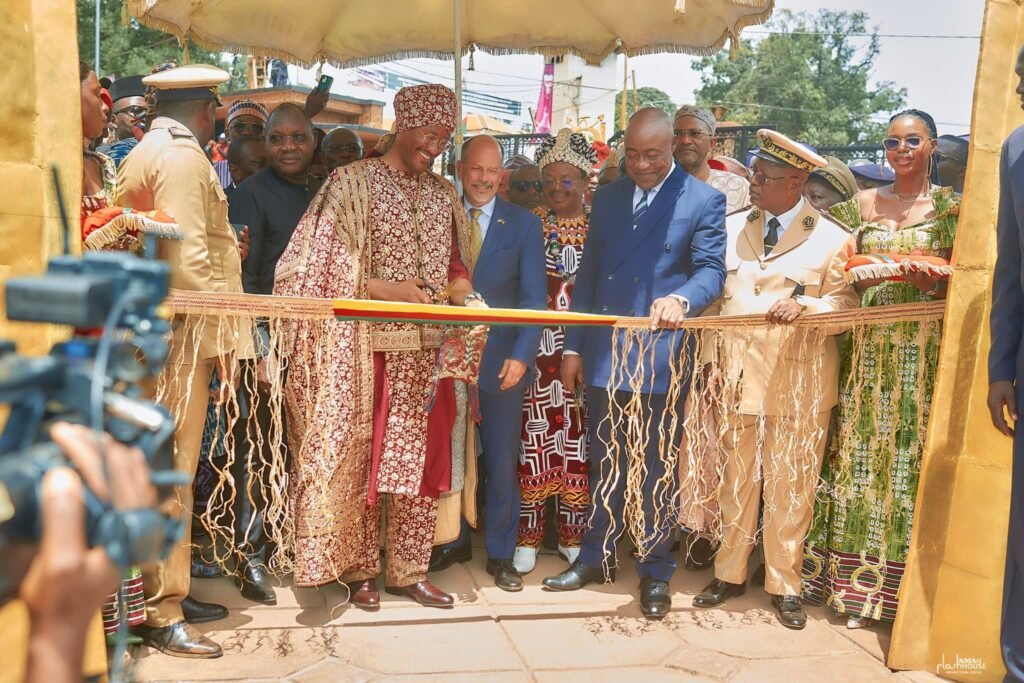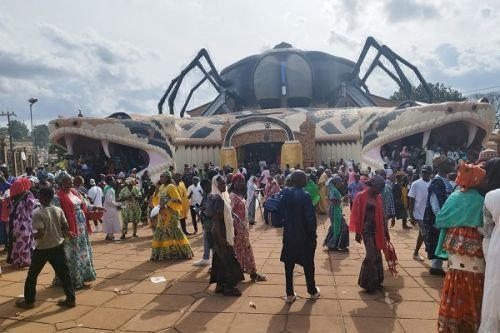In the beating heart of the Western Region of Cameroon, the Historic Museum of the Bamoun Sultanate stands as a testament to the rich tapestry of African heritage and the indomitable strength of the Bamoun people. As the brainchild of architect Issofou Mbouombouo, the museum’s architecture pays homage to the emblem of the Bamoun – a double-headed snake, a spider, and a double-mounted gong. Each element encapsulates the essence of the Bamoun people – strength, wisdom, hard work, and unity.

Perched 1200 meters above sea level and spanning an area of 7.625 km², the Bamoun Sultanate’s roots can be traced back to 1394 AD under the reign of Nshare Yen. Over the centuries, the Sultanate has witnessed the rule of 19 kings, each contributing to the growth and expansion of the kingdom. A significant milestone was achieved during the reign of King MbueMbue in the 1780s, who launched a series of conquests, extending the kingdom’s boundaries and imbuing it with mythical symbols, the snake with two heads, double bells, and spider, which today constitute the arms of the Kingdom.

The 17th king, Njoya, is credited with remarkable achievements such as the invention of a writing system, construction of a grand palace, and the establishment of a museum in 1922, which now boasts one of the richest collections in Africa.
However, the premises of the museum, with its impressive collection of 12,500 artifacts, has outgrown its capacity, leading the current Sultan, Ibrahim Njoya Mbombo, the 19th of the dynasty, to commission the construction of a new, larger museum. This museum, designed by a native architect in close collaboration with the Sultan, seamlessly blends tradition with modernity. Its design is not merely a shelter for artifacts but an artifact in itself, a symbol of the kingdom, even in the absence of exhibits.
The architecture draws inspiration from the kingdom’s emblem:

The Double Bell: A symbol of patriotism, it was traditionally used by the King to rally and invigorate his troops.
The Spider: Symbolic of industriousness. The King encourages his people to be as diligent as a spider, ceaselessly weaving its web.
The Double-Headed Snake: A representation of the Bamoun’s victories on two fronts and a symbol of the kingdom’s power.
In the Historic Museum of the Bamoun Sultanate (Kings), each stone, each symbol, each artifact tells a story – a story of a people, a kingdom, and a culture that has weathered the sands of time to stand tall in the annals of African history.
In Cameroon’s western city of Foumban, sits the newly inaugurated Royal Museum of the Bamoun. The building architecture pays homage to the emblem of the Bamoun – a double-headed snake, a spider, and a double-mounted gong.
King Nabil Mbombo Njoya, the 20th ruler of the Bamouns, inaugurated the museum with Culture minister Pierre Ismaël Bidoung Mkpatt. Professor Francois Bingono Bingono was among the distinguished visitors.

“I was privileged to visit the museum. I can tell you that it is not only the culture of western Cameroon, the culture of the Bamouns that is celebrated inside those walls. I recognized the culture of the forest, meaning the culture of the inhabitants of southern Cameroon, a heavily forested region,” the anthropologist and university lecturer said.
“I also recognized the cultures of the regions of East, Centre and South Cameroon. One can also come across the cultural heritage of Loum, of the Hauts-Plateaux department, and that of northern Cameroon. This museum is the ideal place for those who wish to go back to their roots or take a deep dive into the culture heritage of Cameroon.”
The Bamoun Kingdom is one of the oldest in sub-saharan Africa. Historians date its creation to the late 14th century.
“You can see valuable items inside such as thrones and chairs used by the King…, really anything that has to do with the Bamoun dynasty from the first rulers to the current monarch,” artist Cheick Tiam explained.
“This is patrimony that is handed down to future generations. For the Bamouns, it represents an achievement and a celebration of their culture. For Cameroonians at large, it is part of their history,” businessman Christian Penda said.
The city of Foumban is a tourist hotspot in the central African nation. Artisans believe that it will attract even more tourists interested in artworks and mean more business for them.
To commemorate his grandfather’s work, former Sultan King Ibrahim Mbombo Njoya launched the construction of the museum in 2013 after realizing the palace rooms were too cramped.
The opening of the museum comes months after the Nguon of the Bamoun people, a set of rituals celebrated in a popular annual festival, joined UNESCO’s List of the Intangible Cultural Heritage of Humanity.

Thousands of Cameroonians gathered in the royal palace square in Foumban to celebrate the opening of the Museum of the Bamoun Kings. The museum contains 12,500 pieces including weapons, pipes, and musical instruments — only a few of which were previously displayed in the royal palace.
“It reflects the rich, multi-century creativity of these people, both in terms of craftsmanship and art — Bamoun drawings — as well as the technological innovations of the peasants at various periods: Mills, wine presses, etc.,” Nchare said.
The collection of the Musée des Rois Bamoun (MRB, Museum of the Bamoun Kings), located in Foumban in Cameroon’s West Region, testifies to the richness and diversity of the Bamoun Kingdom’s art, culture, and history.
Additional Sources: tandfonline , momaa.org




